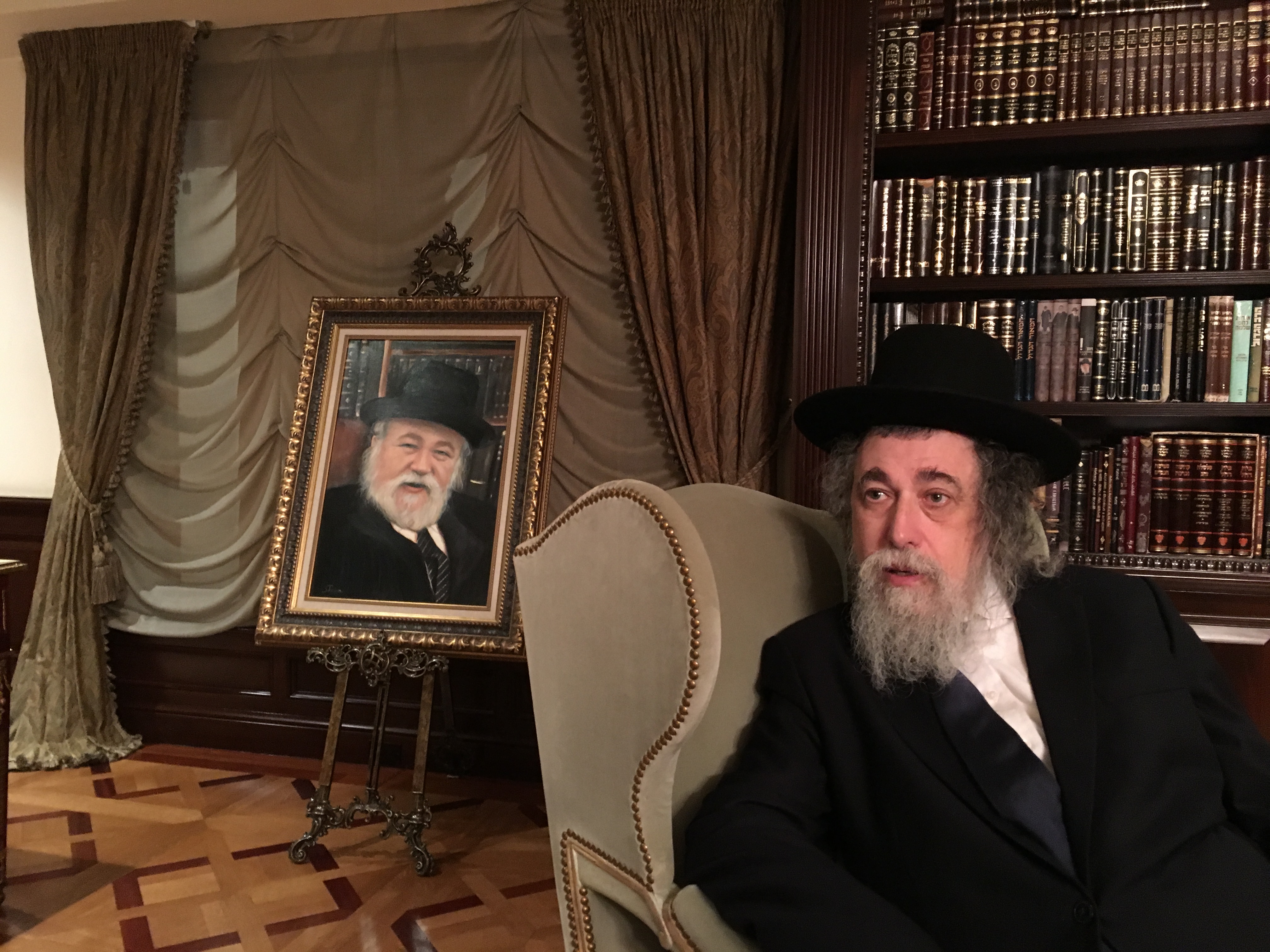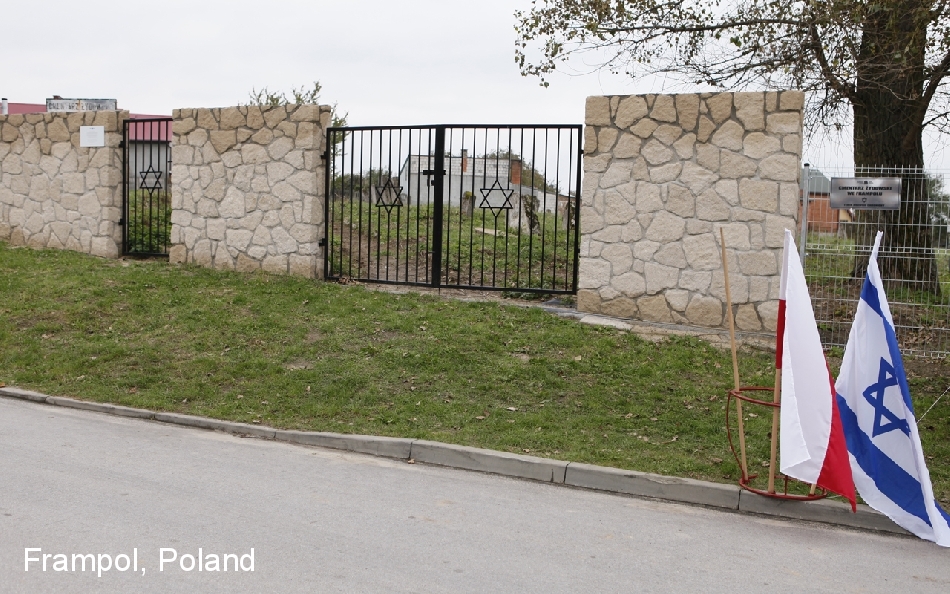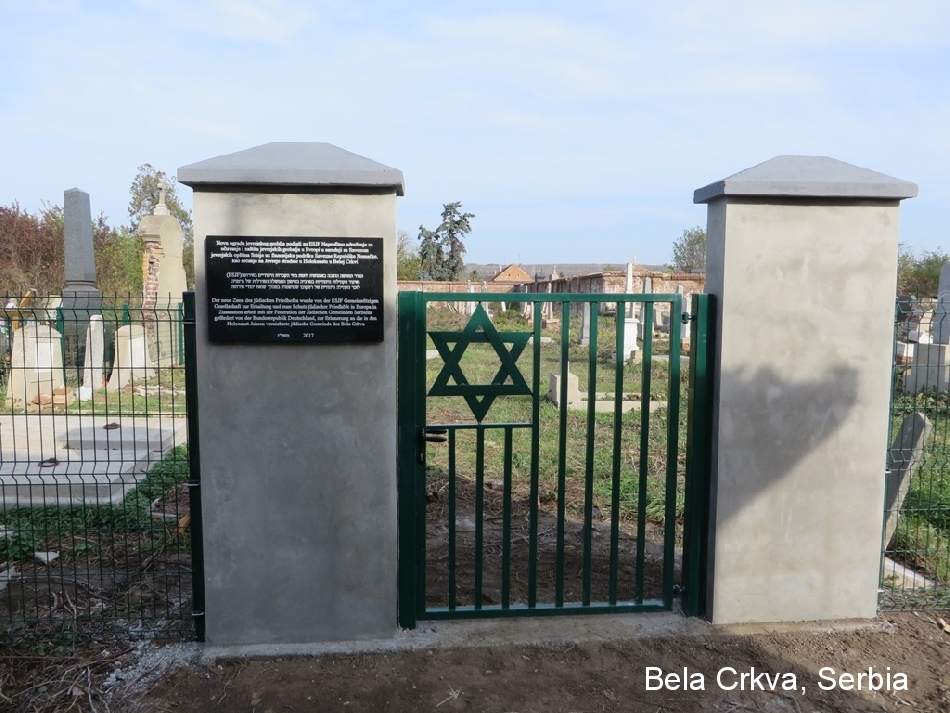Original Article in Chabad.org:
WEST BLOOMFIELD, Mich.—Felicia Bowers’ smile was the size of Lake Michigan when she received the latest update on the number of Facebook viewers who have watched the “Art Through Felicia’s Eyes” video. “You just broke 1 million!” exclaimed Bassie Shemtov, co-founder and director (with her husband, Rabbi Levi) of Friendship Circle. Within a few hours, the number of viewers had already jumped to 1.2 million.
The 27-year-old Detroit resident and her art have been receiving a great deal of attention, partly due to her portrait, “The Dancer”—depicting a very active dancer in a wheelchair—which sold for $14,500 as part of a recent evening event that raised more than $100,000 for the Friendship Circle.
Bowers is intelligent, articulate, persistent and has a great sense of humor. She also has cerebral palsy, is non-verbal, uses a wheelchair at all times, and communicates—and draws—with assistive technology, a Tobii Dynavox tablet with Eyegaze eye-tracking software.
The artist has many followers and admirers in the Detroit area, across the United States and online. Using her eye-tracking equipment, she recently spoke with Chabad.org at Friendship Circle’s Farber Center in West Bloomfield Township, Mich.—and shared her interest in art, how she uses her eyes to communicate and create art, her involvement with Friendship Circle, and her advice for other artists with and without disabilities.
We met in an art room, surrounded by works created by Felicia Bowers and other artists with disabilities at the Dresner Foundation’s Soul Studio. Her mother, Tina Bowers, and Friendship Circle of Michigan’s special-projects coordinator, Jamie Reedholm, joined in the conversation.
The Interview:
Q: Tell me a little bit about yourself. How old are you? Where do you live? Who are some important people in your family and circle of friends?
Felicia: I am 27 years old. I live with my mom, dad and my dog, Max. He is a Shiatzu. He comes here sometimes and sits on my lap!
Q: How and when did you hear about Friendship Circle? What are some of the things you do here?
Felicia: I was watching the news and saw Lillia.
Jamie Reedholm: From the beginning of Friendship Circle, we had a young woman named Lillia who, like Felicia, was in a wheelchair. They had a lot in common, but we learned that afterwards. We were able to get Lillia her own apartment. And with the generosity of the people in our community, it was fully accessible and totally hers. The news came and did a story about it. That’s how Felicia and her family learned about Friendship Circle. Sadly, Lillia passed away.
Q: Can you explain how you are communicating with me right now?
Felicia: I use my eyes to say what I want. There is a camera in the bottom of my device. It tracks my eyes, and when I look at a particular square, selects it. It is a type of Dynavox, a Tobii Dynavox.
Tina Bowers: It can strain your eyes. She is very strong. She had help programming each page—each square has a sentence underneath—she knows what is under each square. She knows where everything is, where she needs to go. She does a lot of spelling. She goes to the dictionary. She looks for a word.
Felicia: My boyfriend, John Wirth, programmed my Tobii.

Felicia Bowers using her Tobii Dynavox tablet with Eyegaze eye tracking software, as her mother, Tina Bowers, looks on.
Q: What are some of the things you do when you come to Friendship Circle?
Felicia: I went shopping and bowling and swimming. I met new friends.
Jamie: The first program she was involved in when she came to Friendship Circle is called “Teen Trips.” Every Sunday, we take teens and young adults on trips.
Q: When did you start with the art part of the program?
Felicia: 2016
Q: How did you discover that you were interested in art?
Felicia: I have always enjoyed art. I remember the first time I created art in middle school. It was the first time I felt free from cerebral palsy and in control of my body.
Q: What did you do? What was the project when you had the moment when you felt so free?
Tina prompts Felicia: Do you remember what you were drawing? Were you painting? Painting with your foot? You were painting with your foot. You had different colors, with a paintbrush taped to your foot. She colored with her hands, but we had to tape crayons on to her hands and we had to mount the paper a certain way to the table for her to color. When she was about 2 or 3 years old, she was walking in the baby walker. I had taped crayons onto her hands, and she walked over to the wall and I had told her not to color on the wall, and she colored on the walls!

“The Dancer”
Q: So she was very typical … big surprise … a defiant 2-year-old …
Tina: Her dad saw it and said, “No!” so we got a piece of plywood and leaned it against the kitchen cabinet and stuck paper on it, and she used to draw while walking over there. It is funny—while in baby-walker upright, she would always go backwards because she didn’t have good support of her body. I was talking to my mom one day and saying, “I wish she could walk forward.” Next minute—she came out from the kitchen, into the living room, walking forward. She leaned against the tray and was walking forward. That is how she was coloring—she would support herself on the tray of the baby-walker, and she would go over and color on the board—that’s why her dad set it up there so she could get to the paper, leaning against it and just color.
Q: (For Tina): You saw she had this interest from an early age, that there was this interest in art, something inside … ?
Tina: Yes. She was drawing lines, always telling me what colors she wanted. She was doing color selections. That’s when she was a baby. I didn’t know it was going to go anywhere because we didn’t know how much her body could do. As she got older, it seems she went from elementary to junior high, and when she got the communication box, she was using a switch. We didn’t have the Eyegaze at that time. But she still had a unit where if she wanted something, she would go to each block, and when she wanted that square, she clicked the clicker—with your foot, right?

A self-portrait by Bowers with her boyfriend, John Wirth
Q: I get the feeling the artist was always inside and with each technology (brush on foot, crayons on finger, etc.) it became …
Tina: She is still growing, and doing more and more and more. And now look what she is doing with lines, with her eyes.
Q: What is your favorite form of art? Is it line drawings, painting, ceramics …
Tina to Felicia: Is it the line drawing? You should put that (the response) in there (in the Dynavox).
Tina: It refreshes her memory for what she wants to say … when she hasn’t talked all day, she is trying to figure out what to say …
It has always been inside of her. It’s just now she is trying to get it all out and it is really very frustrating for her to get her thoughts on the screen, to type all the sentences out. It has been very frustrating all these years. She has been trying to tell us so much all these years.
Now that she has started Soul Center, she has gotten stronger and is learning a lot more—not just drawing, but talking.
Jamie: The social aspect.
Tina: She needed all this. She had some at school, but it is stronger here. And since she has been with John, she has gotten stronger. It is amazing.

Works on display at the Dresner Soul Studio, a unique vocational training program, studio and gallery where artists with disablilites work daily from 10 a.m. to 3 p.m. Their work is then sold in the gallery.
Q: What are some of the themes in your art and why? Things or ideas which keep coming up? That you like to draw?
Felicia: My favorite art piece is to make art which reminds me of the people I love.
Q: Can you give me an example? Something you draw that reminds you of people you love?
Felicia: (Staring at the wall across from her, at her self-portrait of her and John) (Everyone laughs)
Q: Where did you get the idea of the dancer? Do you like to dance?
Felicia: I was little and used to go to Eagle’s Club.
Tina: They used to have a dance; you could take your family and dance. My sister would push her around in her wheelchair and dance with her, twirl her around. That’s what brought that out. That’s what she’s feeling when she sees a dancer. The painting is an actual dancer in a wheelchair dance company in L.A.

Rabbi Levi Shemtov, co-founder and co-director with his wife, Bassie, of Friendship Circle
Q: What are you working on now?
Felicia: I am drawing Ellen!
Tina: Television host Ellen DeGeneres.
Q: I know you guys aren’t Jewish. What is it like to be included in a Jewish program?
Felicia: We appreciate being in the program.
Tina: She really appreciates everything they are doing. She is growing so much more with her communication box, learning more, talking more and getting more words out there. This has opened doors even more.
Q: What is your advice/message for other artists—with and without disabilities?
Felicia: Never give up!
Q: What do you think our society has to keep doing to be more welcoming and inclusive and better for people with disabilities?
Felicia: Be caring and understanding.
Q: Last question. Can you describe the night when your “Dancer” portrait was sold? What was that like? How did you feel?
Felicia: Wow.

Bassie Shemtov, co-founder and co-director (with her husband, Rabbi Levi Shemtov) of Friendship Circle
Artists and Teachers Express Hope for the Future
While Felicia and her art continue to receive worldwide attention and praise, she is one of a number of talented artists and teachers at the Dresner Soul Studio, a unique vocational training program, studio and gallery where artists work daily from 10 a.m. to 3 p.m. Their work is then sold in the gallery.
On the day of my visit, Rollie King of Minneapolis was walking around the gallery. “I really love art, and I’m beyond amazed. This stuff is really great!” She pointed out some of her favorite pieces. “This clock is outstanding!” She is particularly proud of her nephew, Kevin Shink, an artist in his mid-50’s, and pointed out his large three-dimensional creation depicting the city of Detroit.
While Bassie Shemtov is proud of all of the artists, there is particular pride in Felicia Bowers. “Felicia will be able to make a real living, especially as her story is getting out there and as she creates more work, which is something that nobody thought was possible.”
Shemtov says that much of the studio’s success can be attributed to the dedication and creativity of Anthony Marcellini, programs and exhibitions manager at the Soul Studio. “Anthony is so talented. He had no experience working with people with special needs before joining us here,” says Shemtov. “Yet he has a knack of understanding people and truly respects and loves the artists.”

Paintings on display at the Dresner Soul Studio
Marcellini notes the unique opportunities at Soul Studio, “For me, what has been most revealing about working with someone like Felicia is discovering her potential. Because cerebral palsy limits normal methods of communication, many people would write her off as non-verbal and perhaps even low functioning. But actually, she is very smart and has enormous verbal and creative potential. She simply needs the right tools to work around her specific situation. She needs challenges and encouragement to create, newer, different and better work along the way. This is actually the same with every artist in our program, though each person’s specific needs and drives are different.”
Marcellini has been instrumental in helping Felicia continue to find ways to be her best as an artist. Felicia has evolved from painting with her feet and using crayons attached to her fingers, to carefully sketching with her Dynavox. Marcellini explains the technical aspects of Felicia’s drawings.
“Felicia draws using a Tobii Dynavox tablet with Eyegaze eye tracking software. Because of Felicia’s cerebral palsy she is unable to use her arms and legs to the precision she would like to make art. So she has learned how use eye tracking software, to move a cursor across the computer screen and make lines. Every time she turns her eye towards the screen it is like she is clicking the button on the mouse, or like putting pencil to paper, and when she moves her eye away it unclicks, like lifting the pencil off the paper. This, as you might imagine, takes tremendous precision and concentration to operate. Felicia has been using this software and similar software for quite some time, and is able to do this simply because she is very precise, hardworking and talented at it. We are now trying to get her to loosen up and be a little freer with it, to explore new and freer ways of expressing herself. We are also trying to bring in some of the methods she used in the past, like painting with her foot or head, to add some expression to the drawings.”
Marcellini loves his work at the Soul Studio. “What is so exciting about this place is that it is an art studio first, where participants come to the studio curious, enthusiastic and driven. They are met by an equally curious, enthusiastic and driven staff of practicing artists and designers, whose sole aim is to propel their creative ideas into new spheres by providing tools to sidestep or surmount their disabilities. It is a place of constant surprises that has totally shifted my perspective, on education, service and ability. Here art serves as a primary form of communication when common forms are less accessible.”

Artist Kevin Shink with his large three-dimensional creation depicting the city of Detroit
Nicole Kahan began volunteering at the Friendship Circle when she was in seventh grade and continued to work here through high school. She sees tremendous benefit in Friendship Circle for both participants and for the community. “It benefits the overall community because it normalizes people with disabilities and shows the community that we can all be friends. It benefits its volunteers because it allows people to interact with others they wouldn’t normally interact with. It also helps you gain a lot of leadership experience as well as normalizing these interactions. It creates opportunities for teens.”
Kahan is one of the many admiring members of the Detroit community who appear in the viral “Felicia’s Eyes” video. “When I first saw Felicia’s artwork, I truly was speechless. She had the ability to create something so incredible in such a different way.”






